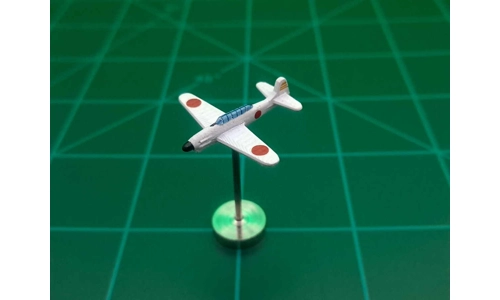
D4Y Judy Dive Bomber
Product Details
- D4Y Judy Dive Bomber
- JUDY-EM-P
-
- Units in Stock: 4
D4Y Judy Dive Bomber Summary
This is a 3D printed sculpt of the D4Y Judy by EBard Models.Development of the D4Y Suisei (Allied code-name Judy) was inspired by the Heinkel He 118 which the Japanese Navy had acquired from Germany in early 1938.
The aircraft had a slim fuselage that enabled it to reach high speeds in horizontal flight and in dives, and had excellent maneuverability despite high wing loading. There was an internal bomb bay and 2 wing hardpoints. Self-sealing fuel tanks and armor was ommitted in order to meet the Navy's range requirements. Subsequently, the D4Y was extremely vulnerable and tended to catch fire when hit.
After initial prototype trials, problems with flutter were encountered, a fatal flaw for an airframe subject to the stresses of dive bombing. Until this could be resolved, early production aircraft were used as reconnaissance aircraft, as the D4Y1-C, which took advantage of its high speed and long range, while not over-stressing the airframe. Production of the D4Y1-C continued in small numbers until March 1943, when the structural problems were finally resolved. Production was switched over from the D3A Val which was incurring increasing losses.
Although the D4Y could operate from the large fleet carriers that formed the core of the Combined Fleet at the start of the war, it had problems operating from the smaller and slower carriers such as the Hiyō class which formed a large proportion of Japan's carrier fleet after the losses at the Battle of Midway. Catapult equipment was fitted, giving rise to the D4Y1 Kai (or improved) model.
The engines of early versions were unreliable and it was refitted with a more reliable radial engine. The new engine improved ceiling and rate of climb, but also consumed more fuel resulting in reduced range and cruising speed. The engine obstructed the forward and downward view of the pilot, hampering carrier operations. These problems were never resolved.
The last version was the D4Y4 Special Strike Bomber, a single-seat kamikaze aircraft, capable of carrying one non detachable 800 kg bomb, which was put into production in February 1945. It was equipped with three RATO boosters for terminal dive acceleration. This aircraft made an ideal kamikaze model with a speed of 350 mph, range of 1,550 mi and a payload of 800 kg.
The D4Y was operated from the following Japanese aircraft carriers: Chitose, Chiyoda, Hiyō, Junyō, Shinyo, Shōkaku, Sōryū, Taihō, Unryū, Unyō and Zuikaku.
The Suiseis did not fare well against Allied fighters, but they were highly effective against ships particularly after installing the rocket boosters. Judys were involved in damaging strikes on many US carriers, including putting out of action 2 Essex-class carriers (Franklin & Bunker Hill).
A total of 2,038 Judys were produced.

Updating Order Details
Please do not refresh or navigate away from the page!
Customer Reviews
No Reviews Posted Yet - be the first!
(write review)




